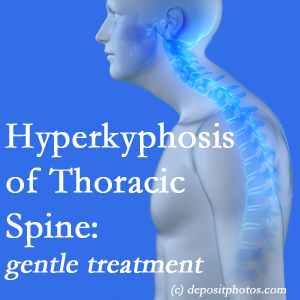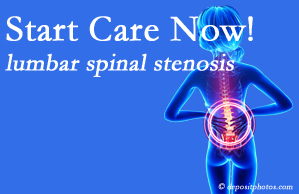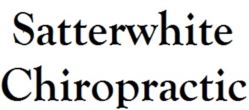Healthy News November 2021 Relieving Chiropractic Care for Hyperkyphosis Curves & Lumbar Spinal Stenosis

The spine has its own usual curvature or kyphosis. Satterwhite Chiropractic knows the spine’s curves quite well! Most Oxford chiropractic clients do not give a second though to the spine’s curve, its normalcy or its function, until there is a problem caused by a curve that is overly curvy. Think about the thoracic spine, the upper back part of the spine, whose normal kyphosis ranges from 20° to 40 in young people. For 20 to 40% of over-60-year-olds, this kyphosis is documented to grow beyond 40°. This “age-related kyphosis” (aka ‘hyperkyphosis’) affects both men and women but is more often seen in women who experience more functional disorders like reduced back extensor muscle strength and use of erector spinal muscles in addition to poor health conditions. (1,2) Spinal manipulation and mobilization of the thoracic spine are common approaches chiropractors use to treat musculoskeletal issues in older adults with conditions like hyperkyphosis. Older spines effectively received the SMM forces similar to younger spines in research studies. (3) Luckily, manual therapy has been researched and described as effective to reduce and prevent musculoskeletal problems due to thoracic hyperkyphosis. A recent report noted that such therapy improved the thoracic kyphosis angle, thoracic extension range of motion, and thoracic extension strength. (4) And a bonus: Thoracic mobilization is shown to increase diaphragmatic excursion and respiratory function to control and prevent respiratory dysfunction in patients with thoracic hyperkyphosis. (5) Your Oxford chiropractor delivers gentle, effective, distractive thoracic spine manipulation that both relieves hyperkyphosis and is quite comfortable. Once you feel it, you’ll want more!
Listen to this PODCAST with Dr. Joseph D’Angiolillo on The Back Doctors Podcast with Dr. Michael Johnson as he explains gentle distraction care of upper spine pain with the Cox® Technic System of Spinal Pain Management.

Lumbar spinal stenosis is a common diagnosis for older Oxford adults. It is related to higher utilization of healthcare services. And surgery is not always the solution according to a study reporting that 1 in 3 lumbar spinal stenosis patients experienced a poor clinical outcome with surgery. Moreover, 36.1% of 529 patients had a poor leg pain outcome while 27.6% had a poor overall outcome. Encouragingly, patients who exercised on a regular basis and those who received pre-operative chiropractic or physiotherapy care were not as likely to report a poor overall outcome. (6) A new study stated that getting such non-operative care starting within the first 30 days of diagnosis decreased the use of riskier and more costly health care services in the following year. Fewer than 2% of Medicare beneficiaries got such care in a timely fashion. (7) Lastly, manual manipulation for 8 weeks was reported to be effective for patients with lumbar spinal stenosis by decreasing their pain and bettering their function. (8) Satterwhite Chiropractic is ready to get started treating your spinal stenosis today, non-operatively and safely.
CONTACT Satterwhite Chiropractic
Make your next Oxford chiropractic appointment today. Spinal conditions like thoracic spine hyperkyphosis and lumbar spinal stenosis respond well to chiropractic treatment!
